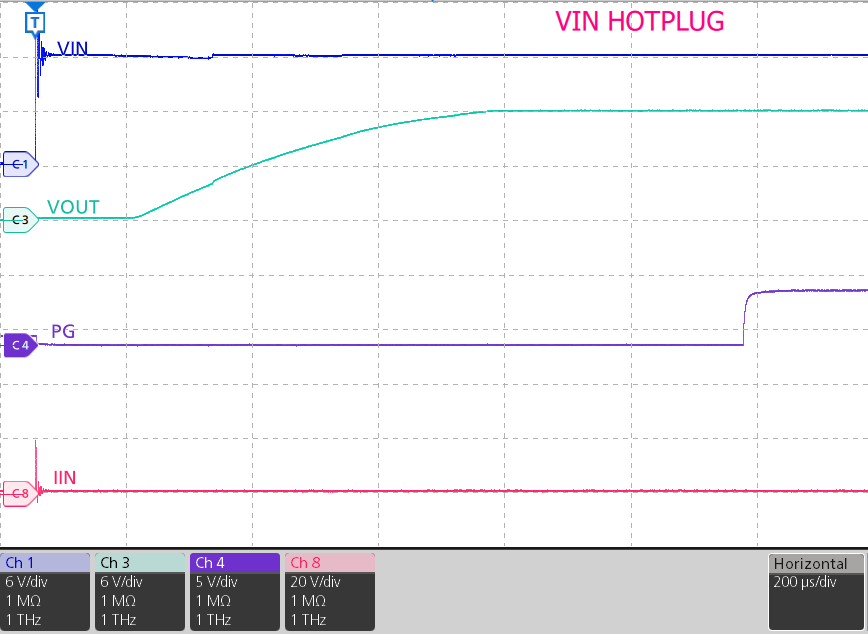SLVUCC0A October 2021 – December 2021 TPS2597
5.1 Hot-Plug Test
Use the following instructions to measure the inrush current during the Hot-Plug event on channel 1:
- Set Jumper J3 position to desired slew rate as mentioned in Table 4-3.
- Set the input supply voltage VIN to 12 V and current limit of 10 A. Enable the power supply.
- Hot-plug the supply between VIN1 and PGND1 points of connector J1.
- Observe the waveform at VOUT1 (TP7) and input current with an oscilloscope to measure the slew rate and rise time of the eFuse with a given input voltage of 12 V.
Figure 5-2 shows an example of inrush current captured on the TPS2597EVM eFuse evaluation board.
 Figure 5-2 TPS2597xx Output Rise Profile (VIN = 12 V, Cout = 10 uF, CdVdT = OPEN, RILM = 750 Ω, No Load)
Figure 5-2 TPS2597xx Output Rise Profile (VIN = 12 V, Cout = 10 uF, CdVdT = OPEN, RILM = 750 Ω, No Load)